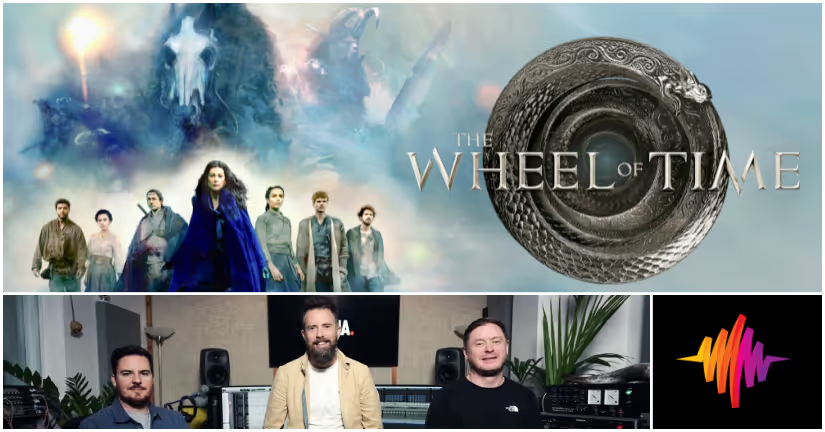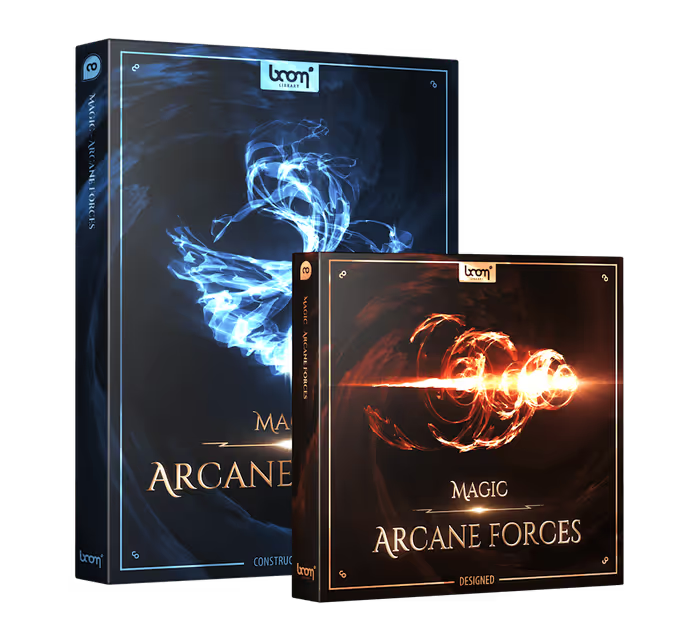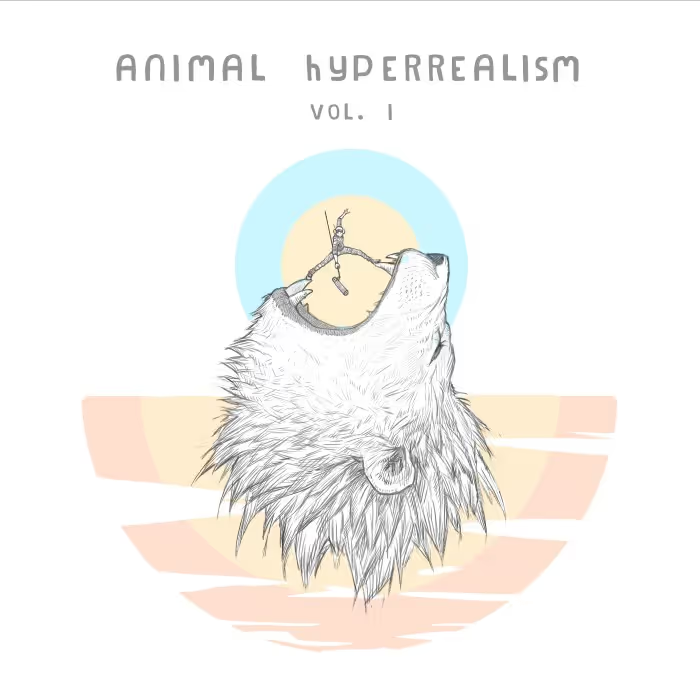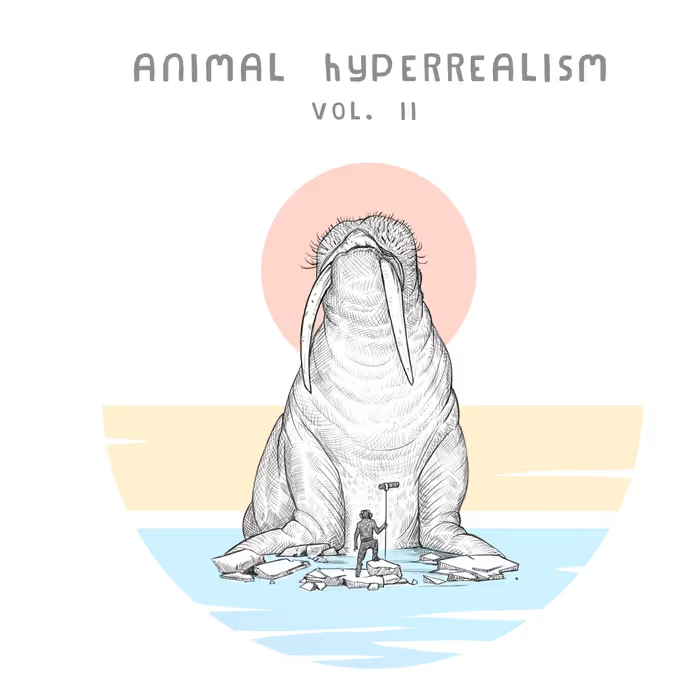VFX always feel more real when there’s great sound to support the visuals. Getting both to work perfectly together takes time and collaboration, but Covid lockdowns have complicated matters to say the least. To design creatures for The Wheel of Time, like the Trollocs and Fades, and the magic channeling sounds, the London-based sound collective SONA – of Matt Skelding (Supervising Sound Editor), Ben Meechan (Sound Designer), and Luke Gentry (Sound Designer) – started work well before seeing detailed VFX images since the timescale for the VFX was so large, and they had regular meetings via Zoom with the VFX team to share ideas. Also, they created and shared a library of background textures and ambient sounds with the picture team to use while editing the cut.
Here, Skelding and Gentry talk about those collaborations with the picture and VFX departments, and with showrunner Rade Judkins, how Covid impacted their workflow and ADR and group recording sessions, and they talk about some useful tools that helped them to get great results even with remote recording. Plus, they detail their approach to the Trollocs’ sound design (like using a Daxophone to add unique flavor), how the Shadows in Shadar Logoth sound developed through the mix, how they altered the voice of Loial to make him sound like an Ogier, and so much more!
The Wheel Of Time – Official Trailer
How early did you start on the show, and what was showrunner Rafe Judkins’s initial ideas for sound on the show? Did he have specific sounds he wanted you to tackle first? Also, were you able to collab with the VFX department/picture department to work out how sound and image would work together for complex designs like the magic?
Luke Gentry (LG): We were brought onto the show quite early in the shoot to do some pre sound design work for Rafe. There were a few key sounds he really wanted ideas for, but we mainly focused on the magic and Fade scream in those early weeks.
The magic in the show is hugely dynamic; it can be small, feminine, and beautiful but also build to be huge and deadly…
Rafe had a clear idea of what he imagined the magic to sound like as it plays a key role in both setting up the world and storytelling. The magic in the show is hugely dynamic; it can be small, feminine, and beautiful but also build to be huge and deadly – all while sounding like it’s drawn from one source, the One Power.
Additionally, the male channeling needed to come from the same place but twist and distort as it became corrupt. These early ideas were then built into a library that the picture editors could cut with and use in the Avid. We developed them further as the VFX turned up, but the core sounds stayed the same.
Matthew Skelding (MS): The entire creative team strongly embraced sound design and a detailed/immersive soundtrack from the start. We talked early about unexpected elements they’d incorporate into the production design/location choices (such as Mongolian influences in some of the landscapes). These were used as jumping-off points for the soundscape.
The general brief was a detailed world that had to be heightened, unique, and have a character of its own – whilst still grounded in the world we know. We had R&D time before we started full time, so we could help with some of the signature design sounds, such as Trollocs/Fades and channeling as well as the more prosaic issue of dialogue cleanup.
The entire creative team strongly embraced sound design and a detailed/immersive soundtrack from the start.
We did have regular Zoom conversations with the VFX department to discuss what was coming, but ultimately the timescale for the VFX was so large that we had to design a lot of the sounds before seeing the detailed images as well as the signature sounds for Fade, Trollocs, and channeling.
It was very important to build a palette of atmospheres and backgrounds. A large amount of work was spent isolating unusual birds from lots of recordings using iZotope. Rafe even sent over short Instagram clips of locations they’d used as inspiration for the visuals and we’d identify the birds in the clips and then find them within our libraries (these can be heard at the end of Ep. 101’s cold open as Moiraine and Lan ride off just prior to the title card).
We sent a library of these background textures over to the picture editors and that really helped as they built the edit, particularly helping to tell the story of the journey our leads go on.
As you can hear in the final version, they play significantly louder than you’d perhaps expect. We have a pretty/comforting/beautiful world in Ep. 101 when they’re in The Two Rivers, but once our heroes leave home the world changes. The animals and creatures become more threatening and discomforting.
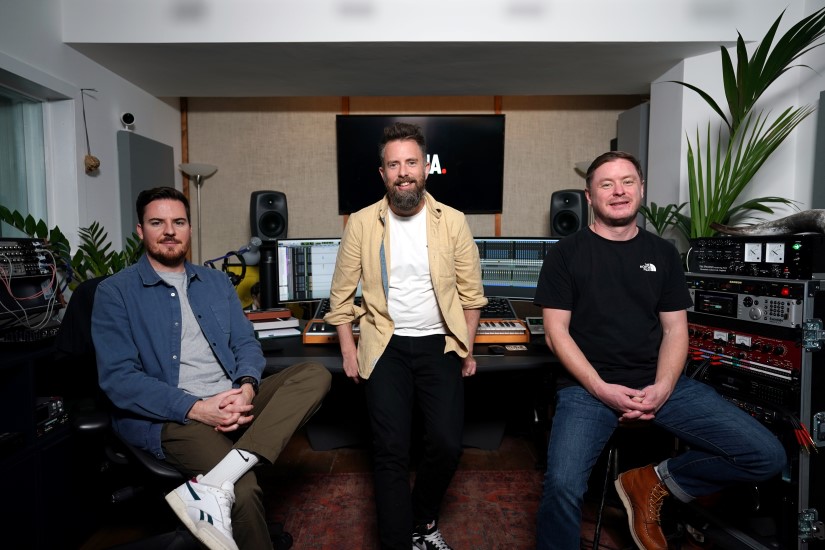
What was your approach to the sound of the The Wheel of Time world overall? And what was your approach to specific places in the show, like Tar Valon, Ghealdan, Aspen Forest, Caralain, Breen’s Spring, Shadar Logoth, and Two Rivers? How did you make these places feel distinct yet part of the same world? Are there sonic threads that run through them all?
LG: World-building was a huge part of the sound design process. Our goal was to build atmospheres that would help reflect and support the story of our characters and their journey through Season 1. Their home, The Two Rivers, needed to feel luscious and beautiful and almost familiar. We wanted to create a safe space for our characters that would twist and change the further from home they got.
We wanted to create a safe space for our characters that would twist and change the further from home they got.
This allowed us to experiment with forest backgrounds and creatures. We wanted to achieve unique yet believable environments without getting too alien. We did a lot of extreme pitching of birds, insects, and atmospheres so we needed great recordings to begin with. Thomas Rex Beverly’s Alaska libraries were amazing for this, and featured heavily in this process.
MS: Shadar Logoth was described in the script as “silent,” so that was an easy starting point. However, this only worked if we kept the world alive and vibrant up until that point, so the sudden absence of sound is shocking.
…we really leaned into the industry of Breen Spring. We played with the rhythmic thumping of the mine, speeding up and slowing down at significant points in the story.
We really wanted Breen Spring to be a real change in tone. They’d left the Two Rivers, which was beautiful, and traveled across and through various wild and natural landscapes so we really leaned into the industry of Breen Spring. We played with the rhythmic thumping of the mine, speeding up and slowing down at significant points in the story. We used a different loop group for this location and tried to make the group as aggressive and raucous as possible.
In Season 1, Tar Valon is our metropolis and had to be a bit of a melting pot. We worked with the researcher to build a bible for the loop group of foods/trades/currency costs that were specific to this location. We really tried to sell the idea that this is a trading center and mix of people. The bazaars are particularly busy and quite claustrophobic. We kept the sense of the city alive, even when we were quite high up in the White Tower, to make it weigh upon our heroes from the Two Rivers.
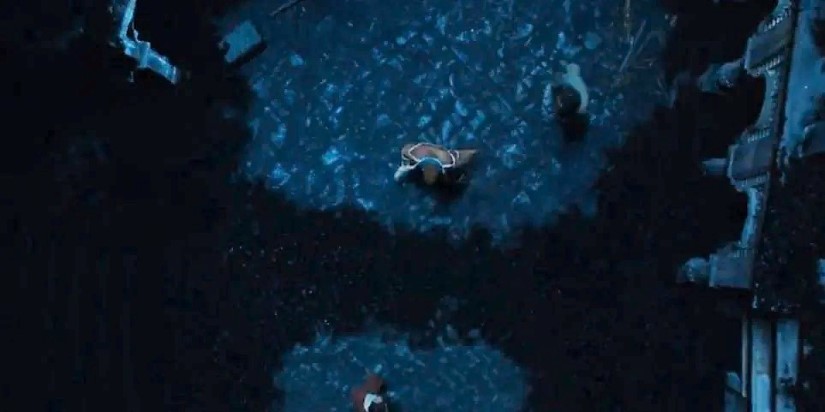
Can you talk about your sonic approach to the creature sounds? And what went into the sounds of the: Fades, Trollocs, the Shadows of Shadar Logoth, and the Ogier?
LG: Just like in the books, the Trollocs are half-human/half-animal Shadowspawn. We really wanted to reflect this hybrid mash-up in their vocal and physicality.
Rafe also had a clear idea from the start about what our Trollocs should sound like; gruntish and unintelligent but also feral and deadly. We did a lot of vocal performances using the Sanken CO-100K as well as a few animal recording sessions. These human elements (as well as Ben’s dog Ozzy) formed most of the expressive ‘glue’ that sat around the main screams and roars – essentially, the visceral, wet slobber that repulses!
For the main roars, we tried to create a palette that reflected the variety in our Trollocs; some look half-wolf, some half-bird, and some half-boar. The Animal Hyperrealism library gave us an amazing starting point for that side of our creatures and allowed us to quickly build a core structure for the Trollocs and get feedback on what was working for Rafe. There’s also a lot of dolphin and whale elements in there, as well as my 5-month-old daughter screaming.
These human elements (as well as Ben’s dog Ozzy) formed most of the expressive ‘glue’ that sat around the main screams and roars – essentially, the visceral, wet slobber that repulses!
After the human and animalistic elements were developed, we looked at trying to add something original to lift and make them stand out. A good friend and fellow sound designer, Rowan Watson, offered up the idea of experimenting with a Daxophone. The Dax is a unique musical instrument that can sound both beautiful and orchestral, as well as feral and otherworldly.
We built our own and bowed all manner of things in the studio getting some interesting results, but we soon felt it necessary to hire a proper Dax player, Daniel Fishkin, who built us a library of unique screams and whines. As the VFX developed, we tinkered with the sounds adding layers and processing to fit any changes.
MS: As much as the vocals for the Trollocs are really important, we really wanted to give their movement/fighting a significant character as well. The foley team did a lot of work creating these slightly clumsy/brutish fight moves that I really think help sell their physicality. There’s such a nice contrast between their movement and the delicate, ringing swordplay from Lan and Tam in Ep. 101.
The Shadows in Shadar Logoth really developed throughout the mix process. Luke created these great elements, some highlighting the physical movement of the shadow and then more sounds based on the screams and terror that told the story of the creation of Mashadar. As we mixed and reviewed, we really leaned into the horror screams and sounds of pure terror. It ended up being one of my favourite sequences in the series. Hopefully, sound elevates the tension and danger throughout.
We recorded all of this ADR at 96kHz on the Sanken CO-100k which gave us a bit more control when pitching his voice.
Loial, our Ogier, is an incredible character, and this is entirely down to the performance by actor Hammed Animashaun. However, to give him the freedom to perform unencumbered by the prosthetics and costume, he did a 100% redo of all of his lines in ADR. He’s amazing at ADR, so it didn’t take very long but this process gave him the chance to really lean into Loial’s unique character (particularly in his first few scenes in Ep. 105).
We recorded all of this ADR at 96kHz on the Sanken CO-100k which gave us a bit more control when pitching his voice. The pitch shifting didn’t stay the same throughout; we changed it depending on what worked for the scene, but it was all done using the IRCAM Trax v3 plugin from flux with a small hint of Lowender from reFuse Software.
 Tesla Model X 2015 electric full size crossover SUV sport utility vehicleKrampfstadt Studio65,00 $32,00 $51% OFF
Tesla Model X 2015 electric full size crossover SUV sport utility vehicleKrampfstadt Studio65,00 $32,00 $51% OFF
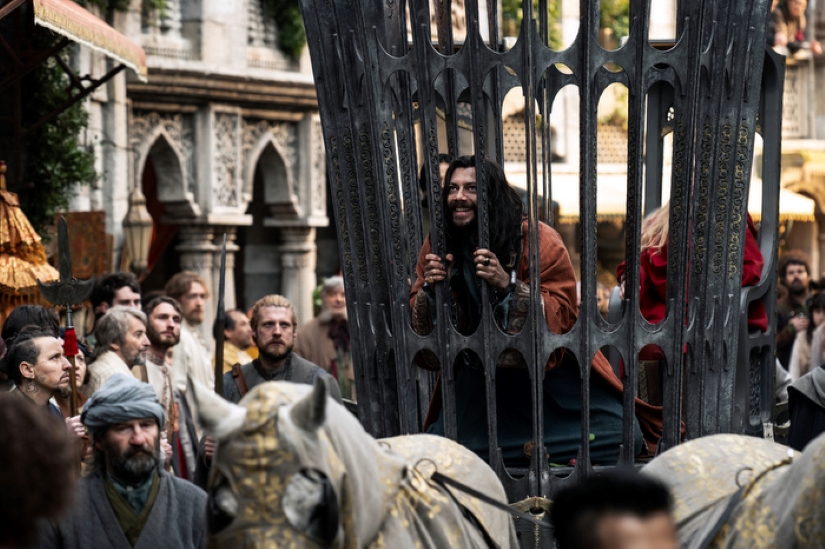
How has Covid affected your workflow on the show?
MS: We were very lucky to get going during the first UK lockdown. Many productions were delayed, but we had enough episodes at the right stage in the picture edit for us to start work. Our cutting rooms are very self-contained and are close to where we live, so we were very lucky to keep them going throughout all the lockdowns.
Working from home, when working in 7.1.2, is problematic unless you have a purpose-built studio in your garden! From a dialogue point of view, Covid meant 99% of all ADR was recorded via Source-Connect. I set up a Source-Connect in my cutting room, and we used Skype for a video feed just to make it all seem a little less remote.
From a dialogue point of view, Covid meant 99% of all ADR was recorded via Source-Connect.
Crowd was difficult, but Phoebe Scholfield at Sync or Swim is a genius, and the Cleanfeed sessions worked really well.
With Covid, there was obviously less time spent in the cutting room with the picture editors and Rafe, so it was really important for us to get as many bounces into the Avid as possible, so they could hear our work as it progressed. This combined with Evercast notes sessions helped keep the communication flowing.
Strangely, as we’re in the UK and the shoot is in Prague, even when restrictions were lifted, not much changed as Rafe and the cast were remote in Prague, so we were still very reliant on Source-Connect and Skype.
[tweet_box]Sound Designing ‘The Wheel of Time’ with Matthew Skelding and Luke Gentry[/tweet_box]
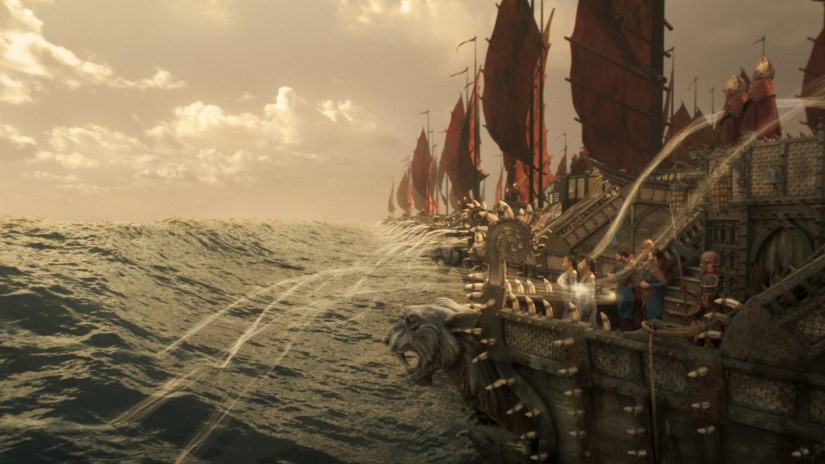
What was the most challenging episode for you in terms of sound? Why?
MS: Episodes 107 and 108 were logistically the most difficult as they were very much caught up in the stop/start nature of Covid filming. Whilst the end of the shoot was significantly delayed, we ended up delivering pretty much on schedule, so it was an extremely compressed schedule.
Ben and Luke did a great job preparing to previz and then worked long hours to turn it all around in time.
So, the obvious issue was turning around the incredible VFX in a short time. Ben [Meechan, sound designer] and Luke did a great job preparing to previz and then worked long hours to turn it all around in time.
On the dialogue side, the tight turnaround just meant a larger team, but hopefully, the end result still sounds as detailed and focused as Episodes 101 to 106.
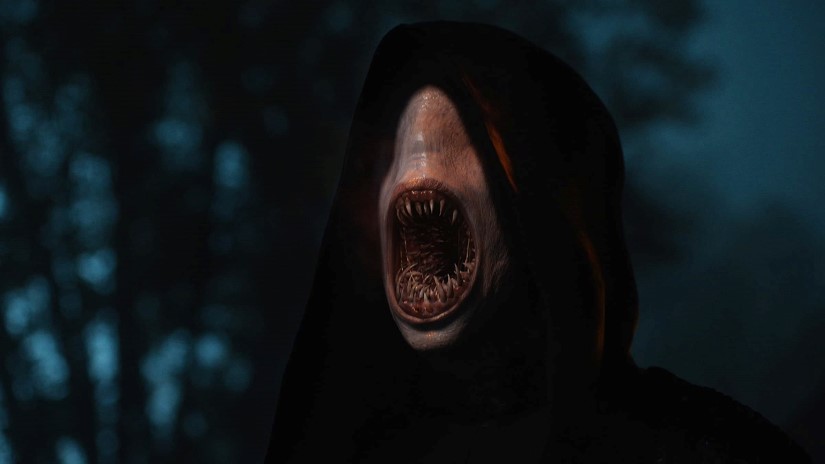
What’s your favorite sound or scene that you’ve designed for The Wheel of Time?
LG: I think Ben smashed it out the park with the Fade scream; that’s my favourite sound and I hear it in my nightmares!
That said, I’m really happy with the amount of work that went into the Season 1 finale, more Trollocs and magics but I don’t want to give too much away for those who haven’t seen it.
There are lots of overlap between the sound design and the work done in the dialogues to propel the story.
MS: I’m really proud of the first 10 minutes or so of Ep. 107. The cold open plays without music right up to the end and then we have the Ways, which is an example of a scene where the dialogue and design teams are working well together. There are lots of overlap between the sound design and the work done in the dialogues to propel the story. It’s a good 10-minute section where sound is given the space to propel the narrative forward.
A big thanks to Matthew Skelding and Luke Gentry for giving us a behind-the-scenes look at the sound of The Wheel of Time and to Jennifer Walden for the interview!
 Tesla Model X 2015 electric full size crossover SUV sport utility vehicleKrampfstadt Studio65,00 $32,00 $51% OFF
Tesla Model X 2015 electric full size crossover SUV sport utility vehicleKrampfstadt Studio65,00 $32,00 $51% OFF

